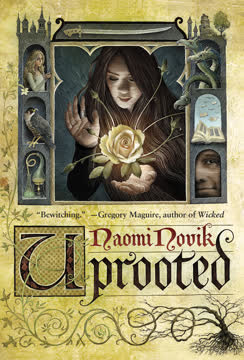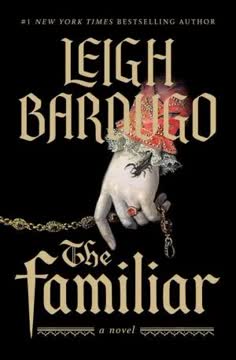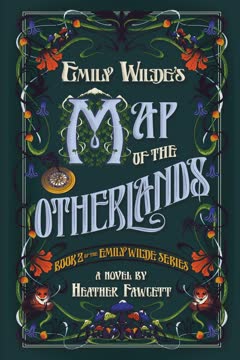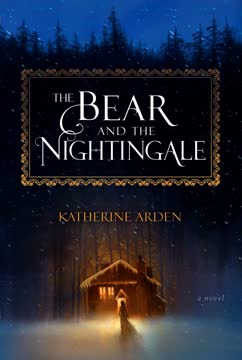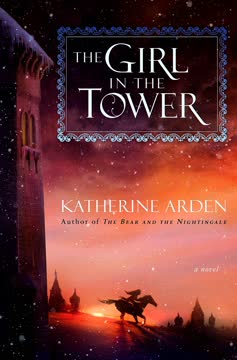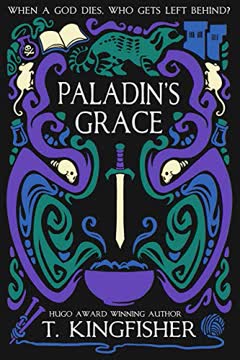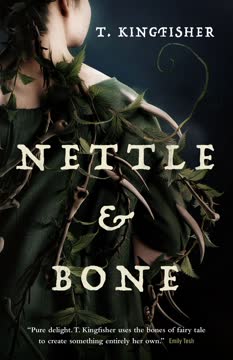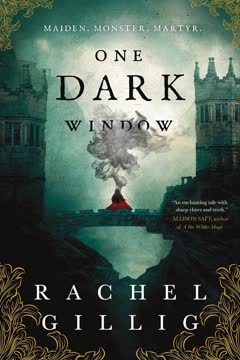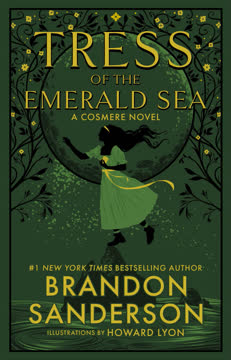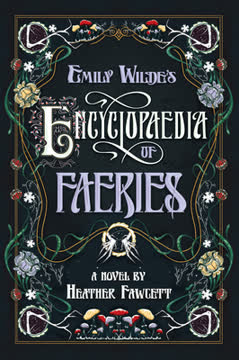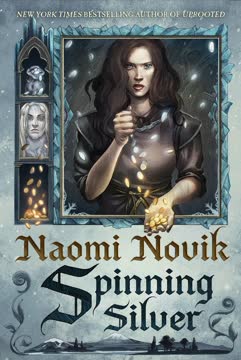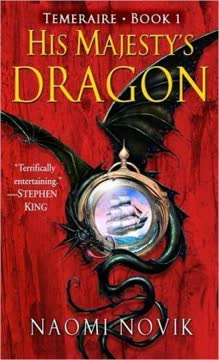Plot Summary
The Choosing and the Tower
In a valley shadowed by the malevolent Wood, every ten years the Dragon, a powerful wizard, takes a seventeen-year-old girl to serve him in his tower. Everyone expects beautiful, capable Kasia to be chosen, but instead, awkward, messy Agnieszka is selected. Torn from her family and best friend, Agnieszka is thrust into a world of magic, isolation, and fear. The Dragon is cold and demanding, and the tower is full of mysteries. Agnieszka's homesickness and terror are palpable, but beneath it all, she is determined to survive and understand why she was chosen. The Wood's threat looms ever closer, and Agnieszka's fate is now entwined with the valley's—and with the Dragon's own secrets.
Unlikely Apprentice
Agnieszka's clumsy nature frustrates the Dragon, who tries to teach her magic through rigid, formal spells. Yet, her power resists his methods, manifesting in wild, intuitive ways. She learns that her magic is rooted in the valley's old, earthy traditions, not the Dragon's scholarly approach. Their relationship is fraught with tension, misunderstanding, and reluctant respect. Agnieszka's longing for home and her deep connection to the land shape her magic, making her both a liability and a unique asset. As she stumbles through lessons and chores, she begins to realize that her difference is her strength, and that the Dragon's isolation hides his own vulnerabilities.
Magic's True Nature
Agnieszka's magic refuses to be tamed by the Dragon's structured spells. Instead, she discovers a book of old, intuitive magic—Jaga's book—that resonates with her. This magic is like gleaning in the woods: finding a path through instinct, song, and feeling. The Dragon is both exasperated and fascinated, forced to confront the limits of his own knowledge. Together, they begin to experiment, blending their powers in ways neither expects. Their magic, when joined, is unpredictable and powerful, hinting at a deeper connection between them. Agnieszka's growth is marked by pain, exhaustion, and small triumphs, as she learns that true magic is as much about who you are as what you know.
The Wood's Corruption
The Wood is not just a forest, but a sentient, ancient evil that corrupts everything it touches—crops, animals, and people. Its influence is insidious, spreading through pollen, water, and even dreams. When Agnieszka's village is threatened, she witnesses firsthand the horror of its corruption: friends and neighbors twisted into monsters, or lost forever. The Dragon's magic can hold the Wood at bay, but not cure it. Agnieszka's attempts to heal a corrupted villager fail, revealing the limits of her power and the depth of the Wood's malice. The valley lives in constant fear, and Agnieszka realizes that the Wood's hunger is growing, and that she may be the only one who can find a new way to fight it.
A Village in Peril
When the Dragon is called away, the Wood attacks Agnieszka's village. Desperate, she escapes the tower and returns home, armed with stolen potions and her fledgling magic. She leads the villagers in a battle against corrupted cattle and wolves, using fire and stone to contain the spread. The cost is high—lives are lost, and the land is scarred. Agnieszka's courage and ingenuity save many, but she is haunted by her failures and the knowledge that the Wood is relentless. Her actions mark her as both a hero and an outcast, and she returns to the tower changed, more determined than ever to master her magic and confront the Wood's evil.
The Dragon's Lessons
The Dragon and Agnieszka, forced to work together, discover that their magic is most powerful when joined. Their partnership is uneasy, full of arguments and misunderstandings, but also growing trust and intimacy. They experiment with spells, illusions, and healing, learning from each other's strengths. The Dragon's loneliness and Agnieszka's longing for home create a fragile connection. Together, they begin to unravel the mysteries of the Wood, and Agnieszka's confidence grows. Their magic becomes a dance—sometimes harmonious, sometimes discordant—but always transformative. The seeds of love and respect are sown, even as danger gathers outside the tower.
Prince, Power, and Politics
Prince Marek arrives, seeking the Dragon's help to rescue his mother, Queen Hanna, lost to the Wood decades ago. His presence brings court politics, suspicion, and temptation. Marek's arrogance and ambition clash with the Dragon's authority and Agnieszka's independence. When Marek tries to seduce Agnieszka, she defends herself with magic, exposing her power and drawing the prince's attention. The court's expectations and the valley's fears collide, and Agnieszka is caught between worlds. The quest to save the queen becomes a symbol of hope and a catalyst for war, as old wounds and new alliances are tested.
The Wood Strikes Back
The Wood retaliates with increasing ferocity, sending monsters and corruption into the valley. Agnieszka's best friend, Kasia, is taken by the Wood, and Agnieszka risks everything to rescue her. She ventures deep into the heart of the Wood, facing its horrors and temptations. With the Dragon's reluctant help, she uses a powerful Summoning spell to purge the corruption from Kasia, but the cost is great. The Wood's malice is undiminished, and its reach extends even into the royal court. The boundaries between friend and foe, human and monster, blur, and Agnieszka realizes that the true enemy is older and more cunning than anyone imagined.
Rescue and Sacrifice
Agnieszka's rescue of Kasia is both a triumph and a tragedy. Though she saves her friend from the Wood's grasp, Kasia is changed—stronger, stranger, no longer fully human. The court is divided over her fate, and Agnieszka must defend her against accusations of corruption. The Summoning spell, cast with the Dragon, reveals the truth but also exposes the limits of magic and the depth of the Wood's pain. Sacrifice becomes inevitable: to save one, others must be lost. Agnieszka's love for Kasia, and her willingness to risk everything, becomes the heart of her power and the key to understanding the Wood's origins.
The Queen's Secret
The rescue of Queen Hanna reveals a terrible secret: she is not merely a victim, but a vessel for the Wood's ancient rage. The Wood's origins are rooted in betrayal, grief, and the clash between human ambition and the old magic of the land. The queen's return sparks war between Polnya and Rosya, as old wounds are reopened and new alliances are forged. Agnieszka and the Dragon must navigate court intrigue, suspicion, and the threat of execution, even as the Wood's corruption spreads. The queen's story is a warning and a plea, and Agnieszka realizes that the only way to end the curse is to confront its source.
War and Betrayal
As war erupts between Polnya and Rosya, the Wood takes advantage of human folly and division. Prince Marek's ambition and the court's fear lead to betrayal, violence, and the deaths of thousands. The Wood's corruption spreads through books, monsters, and even the royal family. Agnieszka and the Dragon are forced to defend themselves against both human and supernatural enemies, using every scrap of magic and cunning they possess. The cost is staggering, and the line between hero and villain blurs. In the chaos, Agnieszka learns that the Wood's true strength lies in exploiting human weakness, and that only unity and compassion can break its hold.
The Heart of the Wood
Determined to end the cycle of violence, Agnieszka and the Dragon journey to the heart of the Wood. There, they discover the truth: the Wood was once a living people, betrayed and destroyed by human fear and ambition. The Wood-queen, trapped and tormented, became the source of the forest's malice. Agnieszka is offered a choice: to join the dream of the trees, or to find another way. She chooses compassion, offering the Wood-queen peace and release instead of destruction. The act of mercy transforms the Wood, breaking the curse and restoring balance. Agnieszka's understanding of magic, love, and sacrifice is forever changed.
The Summoning
The Summoning spell becomes the central tool in Agnieszka's journey, allowing her to see the truth behind the Wood's curse and to share it with others. Through memory and song, she weaves together the stories of the valley, the Wood, and her own heart. The spell is both a weapon and a healing, revealing the pain at the root of the Wood and the possibility of forgiveness. Agnieszka's magic, once wild and uncertain, becomes a bridge between worlds—human and forest, past and present. The Summoning is the key to breaking the cycle of hatred and opening the way to renewal.
The Final Confrontation
In the final battle, Agnieszka and the Dragon face the Wood-queen and the heart-tree. Fire and sword cannot destroy her; only understanding and compassion can. Agnieszka offers the Wood-queen the choice to change, to dream, to let go of her pain. The Wood-queen accepts, and the curse is broken. The Wood is transformed, its malice ended, and the valley is saved. The cost is high—lives lost, innocence shattered—but hope is restored. Agnieszka and the Dragon, changed by their journey, must decide what kind of future they will build, together and apart.
Aftermath and Renewal
With the Wood's curse broken, the valley begins to heal. Agnieszka helps restore the land, freeing those still trapped in heart-trees and teaching others the magic of compassion and connection. The survivors of war and corruption must find new ways to live, and old wounds take time to mend. Agnieszka's friendship with Kasia endures, even as their paths diverge. The Dragon returns to his duties, changed by love and loss. The valley's people learn to trust again, and the promise of peace is real, if fragile. The story ends not with triumph, but with the quiet work of renewal and hope.
Roots and New Beginnings
Agnieszka chooses to remain in the valley, tending the Wood and teaching others the magic of the land. She is neither witch nor queen, but something new—a bridge between human and forest, past and future. The Dragon returns, and their love, hard-won and imperfect, offers the hope of a different kind of life. The valley's festivals and traditions continue, but with new understanding and respect for the old magic. Agnieszka's journey is one of transformation, not just for herself, but for all who live in the shadow of the Wood. The story ends with a dance, a promise, and the knowledge that healing is possible, even after the deepest wounds.
Characters
Agnieszka
Agnieszka begins as an awkward, messy village girl, overshadowed by her beautiful friend Kasia. Her unexpected selection by the Dragon thrusts her into a world of magic and danger. Agnieszka's magic is wild, intuitive, and deeply connected to the land and its old traditions. She is stubborn, compassionate, and fiercely loyal, especially to Kasia. Over the course of the story, Agnieszka grows from a frightened apprentice into a powerful witch, learning to trust her instincts and her heart. Her journey is marked by sacrifice, love, and the willingness to see beyond fear and hatred. She becomes the key to healing the Wood, not through violence, but through understanding and mercy. Agnieszka's greatest strength is her refusal to give up on those she loves, and her ability to find hope in the darkest places.
The Dragon (Sarkan)
The Dragon is the valley's protector, a powerful and ancient wizard who keeps the Wood at bay. He is cold, exacting, and isolated, hiding his loneliness behind sarcasm and strict discipline. His magic is scholarly and structured, the opposite of Agnieszka's wild power. At first, he is frustrated by her clumsiness and unpredictability, but gradually, he comes to respect and care for her. Their partnership is uneasy, marked by arguments and moments of deep connection. The Dragon's own wounds and fears are slowly revealed, and Agnieszka's influence helps him rediscover compassion and vulnerability. By the end, he is changed—still prickly, but capable of love and humility. His relationship with Agnieszka is the story's emotional core, a testament to the power of trust and transformation.
Kasia
Kasia is everything Agnieszka is not: beautiful, capable, and expected to be chosen by the Dragon. Her abduction by the Wood is a turning point, forcing Agnieszka to risk everything for her. Kasia's rescue is both a victory and a tragedy—she is saved, but changed, stronger and stranger than before. Her relationship with Agnieszka is tested by jealousy, guilt, and the trauma of her ordeal, but their bond endures. Kasia's transformation makes her a symbol of resilience and the possibility of healing after horror. She becomes a protector in her own right, using her new strength to defend others. Kasia's journey is one of survival, adaptation, and the enduring power of friendship.
Prince Marek
Prince Marek is bold, charismatic, and driven by the desire to rescue his mother, Queen Hanna, from the Wood. His ambition and arrogance lead him to clash with the Dragon and manipulate Agnieszka. Marek's actions, though often well-intentioned, have disastrous consequences, fueling war and betrayal. He is both a hero and a villain, blinded by pride and the need for glory. Marek's death is a moment of tragedy and irony—he is killed by the very force he sought to defeat, and his certainty becomes his undoing. His character embodies the dangers of unchecked ambition and the complexity of heroism.
Queen Hanna / The Wood-Queen
Queen Hanna is the lost queen, whose abduction by the Wood sets the story's events in motion. Her rescue reveals that she is both a victim and a vessel for the Wood's ancient rage. The Wood-queen, once a living being betrayed and imprisoned, becomes the source of the forest's malice. Her pain and fury drive the Wood's corruption, and her story is one of loss, vengeance, and the longing for peace. The queen's dual nature challenges the characters to see beyond simple good and evil, and her final release is an act of mercy that transforms the world. She is a symbol of the consequences of betrayal and the possibility of redemption.
Solya (The Falcon)
Solya is the king's court wizard, skilled in politics and magic. He is charming, manipulative, and always looking for advantage. Solya's relationship with Agnieszka and the Dragon is complex—sometimes ally, sometimes rival. He is quick to adapt, aligning himself with whoever seems most likely to win. Solya's magic is powerful but lacks the depth and connection of Agnieszka's. He represents the dangers of ambition without compassion, and the limits of power used for personal gain. Despite his flaws, Solya is not without conscience, and his survival is a reminder that change is possible, even for the most self-serving.
Alosha
Alosha is a legendary wizard and swordsmith, centuries old, who serves as a voice of caution and wisdom. She is practical, principled, and deeply committed to protecting the kingdom. Alosha's magic is rooted in craft and tradition, and her long life has taught her the cost of power. She is both mentor and challenger to Agnieszka, urging her to consider the consequences of her actions. Alosha's sacrifice in the final battle is a moment of profound loss, but her legacy endures in the sword she forges and the lessons she imparts. She embodies the strength of endurance and the importance of memory.
The Wood
The Wood is both a place and a character—an ancient, sentient force driven by pain, betrayal, and the longing for revenge. Its corruption is insidious, spreading through land, water, and people. The Wood's origins are rooted in the destruction of a living people, and its malice is both personal and cosmic. It feeds on human weakness, exploiting fear, ambition, and division. The Wood is a mirror for the characters' own darkness, and its defeat requires not just power, but understanding and compassion. The Wood's transformation is the story's central metaphor for healing and the possibility of change.
The Valley
The valley is more than a setting—it is the heart of the story, a place of beauty, tradition, and danger. Its magic is old and deep, shaping those who live there. The valley's people are resilient, bound to the land and to each other. The struggle to save the valley from the Wood is both literal and symbolic, a fight for memory, identity, and the right to belong. The valley's healing is a testament to the power of community and the importance of honoring the past while embracing change.
Jaga
Jaga is a figure from legend, whose book of spells becomes Agnieszka's guide. Her magic is intuitive, untamed, and deeply connected to the land. Jaga's presence is felt throughout the story, a reminder that true power lies in embracing one's nature and trusting in the wisdom of the earth. She is both mentor and myth, a symbol of the magic that endures beyond rules and boundaries. Jaga's legacy is the freedom to find one's own path, and the courage to heal what others would destroy.
Plot Devices
The Wood as Living Antagonist
The Wood is not just a setting, but a living, malevolent force that shapes the story's events. Its corruption spreads through land, people, and even memory, creating monsters and sowing division. The Wood's attacks escalate in response to human actions, forcing the characters to confront their own fears and failings. The Wood's origins are revealed through foreshadowing and the Summoning spell, tying its fate to the valley and its people. The Wood's defeat requires not just power, but understanding, compassion, and the willingness to break the cycle of violence. Its presence is a constant reminder of the consequences of betrayal and the possibility of redemption.
Magic as Personal and Communal
Magic in Uprooted is not a fixed system, but a living, evolving force shaped by personality, tradition, and relationship. The contrast between the Dragon's formal, scholarly magic and Agnieszka's wild, intuitive power is a central theme. Their partnership, and the blending of their magics, becomes a metaphor for trust, love, and the breaking of boundaries. Jaga's book, the Summoning spell, and the healing of the Wood all illustrate that true magic is found in connection—to the land, to others, and to oneself. The story uses magic to explore questions of identity, belonging, and the cost of power.
The Summoning Spell
The Summoning spell is a pivotal device, allowing characters to see the truth behind the Wood's curse and to share it with others. It is both a weapon and a healing, revealing the pain at the root of the Wood and the possibility of forgiveness. The spell's use is foreshadowed throughout the story, and its final casting is the key to breaking the cycle of hatred. The Summoning is a metaphor for the power of story, memory, and empathy to transform the world.
Foreshadowing and Revelation
The story is rich with foreshadowing: the girls' fear of the Wood, the Dragon's isolation, the valley's old magic, and the mystery of the Wood's origins. Revelations are carefully timed, each one deepening the stakes and challenging the characters' assumptions. The truth about the Wood-queen, the nature of magic, and the cost of victory are all revealed through a blend of memory, story, and spell. The narrative structure weaves past and present, myth and reality, creating a tapestry of meaning that rewards careful reading.
War as Mirror and Catalyst
The war between Polnya and Rosya is both a backdrop and a catalyst, mirroring the Wood's corruption and feeding its power. Human ambition, pride, and betrayal are as dangerous as any monster, and the story uses war to explore the consequences of division and the need for unity. The war's escalation and resolution are intertwined with the fight against the Wood, and the characters' choices in both arenas determine the fate of the valley. The war is a reminder that the greatest threats are often those we create ourselves.
Analysis
Uprooted is a modern fairy tale that reimagines the classic battle between good and evil as a struggle for understanding, compassion, and healing. At its heart, the novel is about the dangers of fear, the cost of betrayal, and the power of connection—to land, to tradition, and to each other. Naomi Novik uses the Wood as a metaphor for trauma, grief, and the wounds that fester when left unhealed. The story challenges the idea that evil can be destroyed by force alone, suggesting instead that true change comes from empathy, forgiveness, and the willingness to see beyond one's own pain. Agnieszka's journey from awkward village girl to powerful witch is a testament to the value of difference, the importance of listening to one's own voice, and the necessity of embracing both roots and change. The novel's lessons are timely: that community is built on trust and sacrifice, that power must be tempered by humility, and that even the deepest wounds can be healed—not by violence, but by the courage to love and to let go. Uprooted reminds us that the stories we tell, and the choices we make, shape the world we inherit—and that hope, once planted, can grow even in the darkest soil.
Last updated:
Review Summary
Uprooted receives mixed reviews, with many praising its enchanting fairy tale atmosphere, vivid world-building, and compelling characters. Critics appreciate the Polish folklore influence and the unique magic system. However, some readers find the pacing slow, the romance underdeveloped, and the characters lacking depth. The book's dark and violent elements are noted as potentially off-putting for some. Despite divided opinions, many reviewers consider it a captivating and beautifully written fantasy novel, with some hailing it as their favorite book of the year.
Similar Books
Download PDF
Download EPUB
.epub digital book format is ideal for reading ebooks on phones, tablets, and e-readers.
